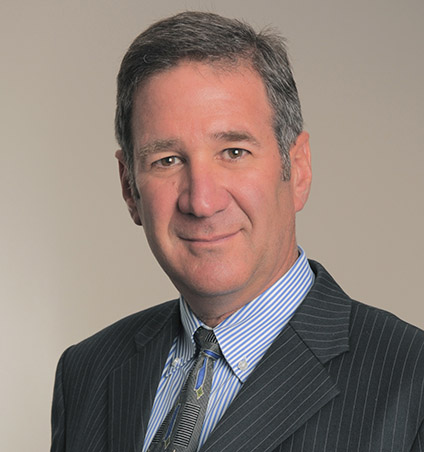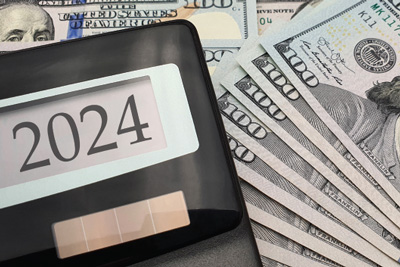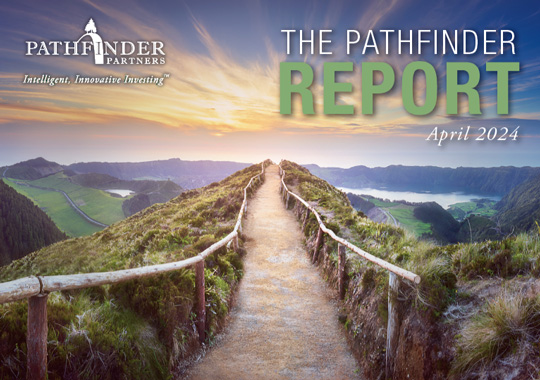Charting the Course
Perceptions of Inflation – Falling or Still Too High? – Will Tell the Tale in November
By Mitch Siegler, Senior Managing Director

“Inflation is when you pay fifteen dollars for the ten-dollar haircut you used to get for five dollars when you had hair.”
- Sam Ewing, American Baseball Player
Much ink has been spilled during the past several years about inflation, which skyrocketed from next to nothing to the highest level in 40 years. Inflation, which peaked at 9.1% in June 2022 fell to 3.2% in February 2024. Good news, right?
Not so fast. The Federal Reserve’s target rate for inflation – when Fed governors will ease off the brake pedal and start loosening up on interest rates – is 2% and we haven’t had 2% inflation since 2020. Lest you’ve forgotten, that was during a global pandemic, when the economy slowed to a crawl.
Historically, sitting presidents are reelected two-thirds of the time – and 80% of the time if there is no recession in the election year. When the election year coincides with a recession, the President has won just 44% of the time and only 33% since World War II. (You’d have to go back to 1900, President William McKinley, to find an incumbent who was reelected during a recession.)
Eight months from the election, there are few signs of an impending recession. That said, kitchen table issues – like the price of milk, eggs and Cheerio’s – determine the winner of presidential elections more often than not. Americans profess strong feelings about a whole host of issues – from a woman’s right to choose, to immigration/border policies, to foreign policy and more. But most of the time, Americans vote their pocketbooks.
 So, what about the prices of milk, eggs and Cheerio’s? You glass-half-full types will be pleased to know that the price of milk fell 1.5% in 2023, according to the Labor Department’s Bureau of Labor Statistics. Yippee! You glass-half-empty types won’t be thrilled to learn that milk prices rose 13.2% in the past three years. (No crying over spilt milk jokes from us.)
So, what about the prices of milk, eggs and Cheerio’s? You glass-half-full types will be pleased to know that the price of milk fell 1.5% in 2023, according to the Labor Department’s Bureau of Labor Statistics. Yippee! You glass-half-empty types won’t be thrilled to learn that milk prices rose 13.2% in the past three years. (No crying over spilt milk jokes from us.)
And what about egg prices, averaging $2.14/dozen in January 2024? You’ll be happy to hear that egg prices are down 56% from their peak in January 2023. Good news isn’t always what it’s cracked up to be – egg prices have risen 52% since November 2019, just before the onset of the pandemic. That may explain why “eggs” were the #1 Google search topic in 2023 in the “Why are ____ (f*&#’ing eggs!) so expensive?” category?
Who cares about the prices of Cheerios, really? Well, did you know that 96% of consumers purchase cereal on every visit to the grocery store? And that Cheerios are the #1 cereal brand with a whopping 139 million boxes sold last year? Don’t think we’ve bought a box of Cheerios since our 20-something daughter was a toddler – and we’re shocked to see what they cost today!
In 2022, the average price of Cheerios rose 16.7%, from $6.86 to $8.00. While that’s a slower rate of inflation than for Life (17.7%) or Raisin Bran (19.7%), it’s in a different cupboard entirely than perennial favorites like Cap’N Crunch (up 41.9%) and Crunch Berries (up a whopping 114%! – sorry, kids – it’s gonna be Raisin Bran for a while), it’s clear that inflation bites at the breakfast table. And with limits to the prices consumers will pay for half a box of cereal and half a box of air, cereal manufacturers responded last year by adding more air (er, shrinking portion sizes). Shrinkflation, they call it. Maybe it sounds less unpleasant?
As we ponder the question of whether the inflation story has a happy or a not so happy ending, we recall the wisdom of Groucho Marx: “There's two types of people in the world; Those who think people can be divided up into two types, and those who don’t.”
How does all this affect me, you ask? Well, absent a recession in 2024, don’t be surprised if the ’24 Presidential election turns on Americans’ view of inflation. Those who are pleased about the fall in the inflation rate from 9.1% to 3.2% in the past 21 months will likely vote one way. And those who chafe at the higher prices for groceries, cars and other stuff are likely to vote the other way. For the latter group, perception is reality.
And as they say on late night television, “but that’s not all.” There’s inflation on the stuff people buy every day. There are also higher costs on capital goods – homes and vehicles – driven by higher interest rates. Let’s spend a minute unpacking that.
 The January 2024 inflation “print” ran hotter than expected. The February inflation rate was also higher than expected. At its mid-March meeting, the Federal Reserve governors signaled a possible rate cut in June. Pundits – who just a couple of months ago were forecasting six interest rate cuts this year – are now talking about three – and at least one would likely come only in November-December – following the election. So, this same dynamic (good news: rates are beginning to fall, finally vs. bad news: interest rates are still too darned high!) will be at work all year on the second, very important driver of household expenses.
The January 2024 inflation “print” ran hotter than expected. The February inflation rate was also higher than expected. At its mid-March meeting, the Federal Reserve governors signaled a possible rate cut in June. Pundits – who just a couple of months ago were forecasting six interest rate cuts this year – are now talking about three – and at least one would likely come only in November-December – following the election. So, this same dynamic (good news: rates are beginning to fall, finally vs. bad news: interest rates are still too darned high!) will be at work all year on the second, very important driver of household expenses.
It's hard to know now which way the inflation cookie will crumble. (We’ll save the discussion of higher Oreo® prices and less creamy filling in each cookie for a future issue.) We do know this: at a recent San Diego real estate conference, the chief economist for real estate brokerage firm CBRE showed his forecast for the 10-year treasury rate through 2030. The 10-year is a helpful benchmark for understanding what you’ll likely pay for a mortgage or car/truck loan in the years ahead. At press-time, the 10-year treasury rate was about 4.2%. CBRE thinks it will hover around 4.0% through 2030. That suggests it could be hard for borrowers – and consumers – to get any real relief from high interest rates and consumer prices.
America is polarized and the 2024 presidential election promises to be close. And the election will most certainly be decided in six to eight swing states. There will be lots of twists and turns in the next seven months, but you can take this to the bank: Americans’ views of the economy – and inflation in particular – will play a meaningful role in determining our nation’s leadership in the years ahead.
Mitch Siegler is Senior Managing Director of Pathfinder Partners. Prior to co-founding Pathfinder in 2006, Mitch founded and served as CEO of several companies and was a partner with an investment banking and venture capital firm. He can be reached at msiegler@pathfinderfunds.com.
Share this Article
IN THIS ISSUE
PATHFINDER PARTNERS INCOME FUND, L.P.
A Stablized Multifamily Fund
CHARTING THE COURSE
Perception of Inflation – Falling or Still Too High? – Will Tell the Tale in November
FINDING YOUR PATH
A Looming Crisis in the Banking Sector?
GUEST FEATURE
The Impact of AI on Apartment Investing
ZEITGEIST
News Highlights
TRAILBLAZING
Point Loma Palms, Point Loma (San Diego), CA
NOTABLES AND QUOTABLES
Disruption / Innovation
